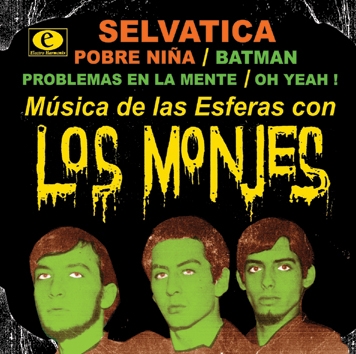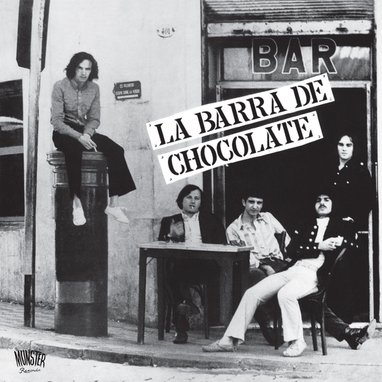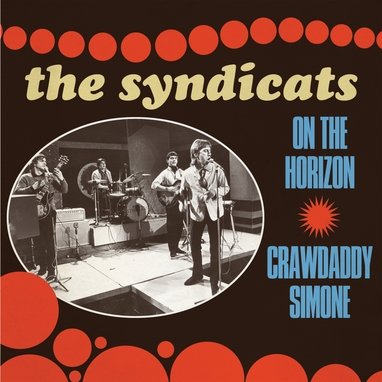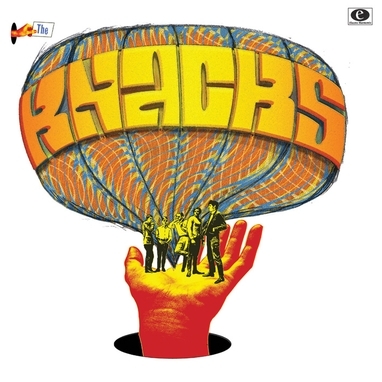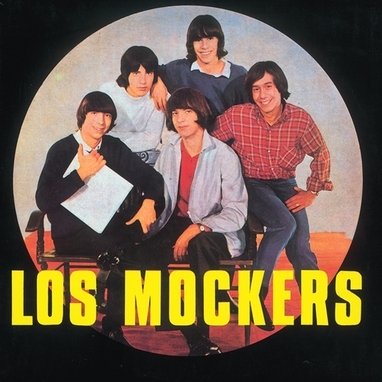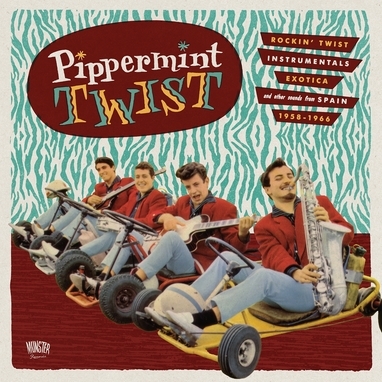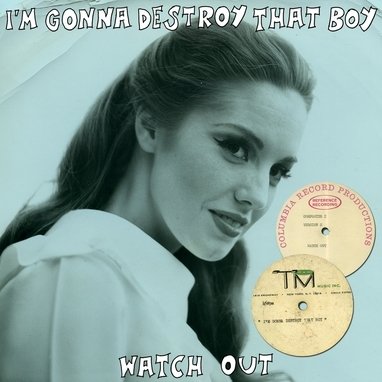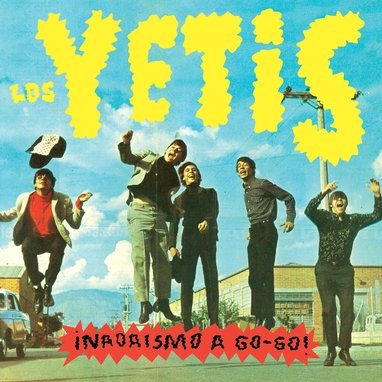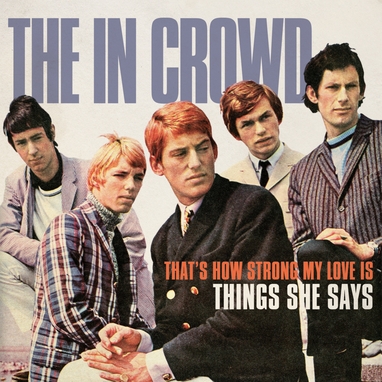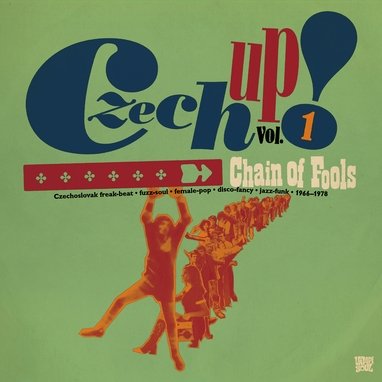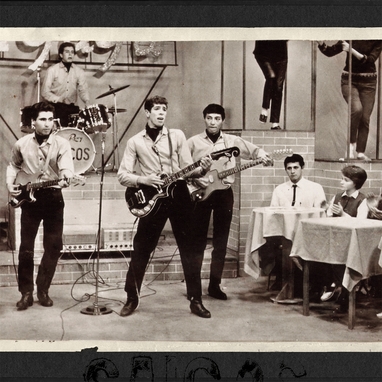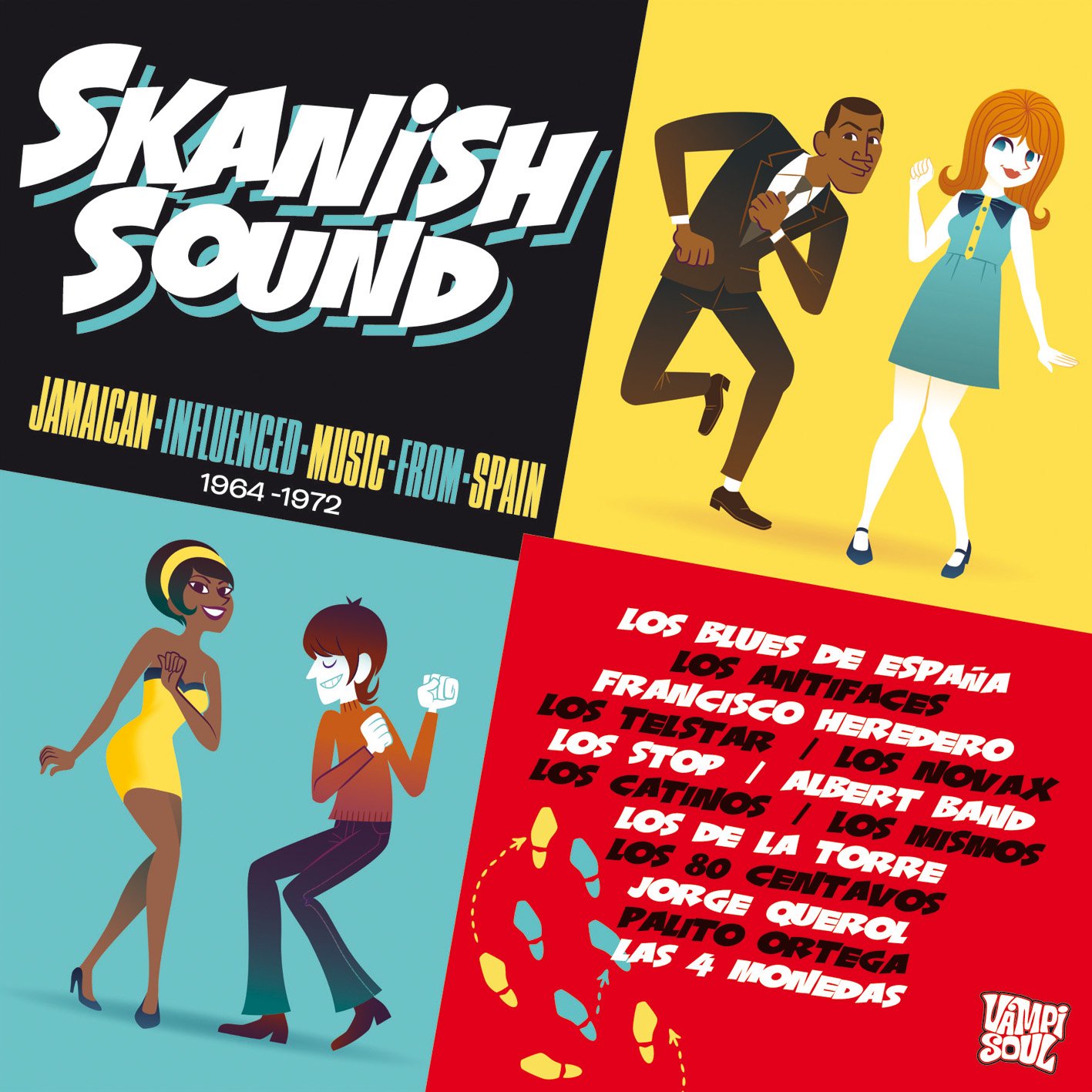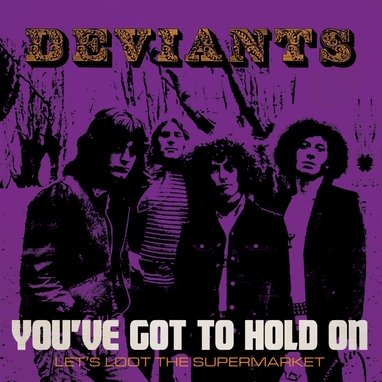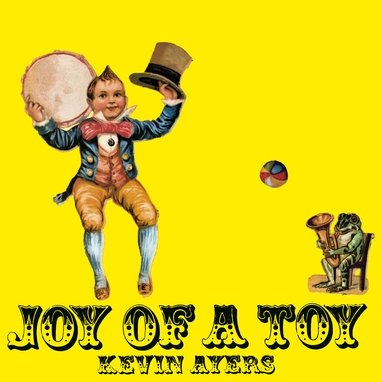Los Monjes
Música de las esferas con…
13,00€
Electro Harmonix
Los Monjes
Música de las esferas con…
1000 copies limited edition.
Although they weren’t unknown at all in their time, Los Monjes didn’t fully enjoy the glories of success where gold records, silver gods and parades are concerned. They didn’t go unnoticed because of their above average quality and eye-catching attire. They also maintained a trio lineup somewhere along the uncertain border between jazz and rock. They were the Mexican Ramsey Lewis Trio and they found salvation thanks to the organ and the riff-raff of their guitars. Only in Luces de la Ciudad (City Lights) did Hesiquio Ramos step away from the keyboard to pick up the guitar (and not with very good results). Originally consisting of Hesiquio Ramos (organ and piano), Jorge Bracho (drums) and Fernando Pazos (bass), they appeared for the first time in the not so good film, Cuernavaca en Primavera (Spring in Cuernavaca)(1965), directed –as almost all the other films they did in their career- by Julio Bracho, Jorge’s son. Once in their way, they took part, to the beat of baroque jazz a go-go, in Sergio Véjer’s La Muerte es Puntual (Death is Punctual) (1965). José Antonio de la Mora soon took Pazos’ place, and in 1966 they recorded their now famous and costly live album from the Politécnico (CBS, DCA-479) where they scored big with a Concierto Varsovia on which Hesiquio Ramos tried to sound like Carmen Cavallaro. They later dedicated themselves to surviving, which is no small task, and appeared in several movies: Damiana y los Hombres (1966) and Andante (1967). In the latter movie, their drummer split from them and appeared playing jazz (which is what he liked) under the name Jorge Bracho y la Máquina de Sonido. They almost immediately charged back and continued on their path until 1973, the year in which their second LP for the Okeh label was released (OKLS 10360,) on which appear some new studio recordings. When destiny caught up with them, Los Monjes disappeared. Around 1963 or ’64 Hesiquio recorded popular Jazz with his trio (surely the embryo of Los Monjes)for Cisnes Records (CI-1072). Within a short time the Las Tandas del Tlancualejo (Teatro del papel 759-001) album appeared, in 1968 they pulled from their sleeves the baroque EP (Yoxa), and years later Gran Bazar, an instrumental version made by contract for the Aurrerá stores. The End.
Productos relacionados
13,00€
1000 copies limited edition.
Although they weren’t unknown at all in their time, Los Monjes didn’t fully enjoy the glories of success where gold records, silver gods and parades are concerned. They didn’t go unnoticed because of their above average quality and eye-catching attire. They also maintained a trio lineup somewhere along the uncertain border between jazz and rock. They were the Mexican Ramsey Lewis Trio and they found salvation thanks to the organ and the riff-raff of their guitars. Only in Luces de la Ciudad (City Lights) did Hesiquio Ramos step away from the keyboard to pick up the guitar (and not with very good results). Originally consisting of Hesiquio Ramos (organ and piano), Jorge Bracho (drums) and Fernando Pazos (bass), they appeared for the first time in the not so good film, Cuernavaca en Primavera (Spring in Cuernavaca)(1965), directed –as almost all the other films they did in their career- by Julio Bracho, Jorge’s son. Once in their way, they took part, to the beat of baroque jazz a go-go, in Sergio Véjer’s La Muerte es Puntual (Death is Punctual) (1965). José Antonio de la Mora soon took Pazos’ place, and in 1966 they recorded their now famous and costly live album from the Politécnico (CBS, DCA-479) where they scored big with a Concierto Varsovia on which Hesiquio Ramos tried to sound like Carmen Cavallaro. They later dedicated themselves to surviving, which is no small task, and appeared in several movies: Damiana y los Hombres (1966) and Andante (1967). In the latter movie, their drummer split from them and appeared playing jazz (which is what he liked) under the name Jorge Bracho y la Máquina de Sonido. They almost immediately charged back and continued on their path until 1973, the year in which their second LP for the Okeh label was released (OKLS 10360,) on which appear some new studio recordings. When destiny caught up with them, Los Monjes disappeared. Around 1963 or ’64 Hesiquio recorded popular Jazz with his trio (surely the embryo of Los Monjes)for Cisnes Records (CI-1072). Within a short time the Las Tandas del Tlancualejo (Teatro del papel 759-001) album appeared, in 1968 they pulled from their sleeves the baroque EP (Yoxa), and years later Gran Bazar, an instrumental version made by contract for the Aurrerá stores. The End.
Productos relacionados
Música de las esferas con…
1000 copies limited edition.
Although they weren’t unknown at all in their time, Los Monjes didn’t fully enjoy the glories of success where gold records, silver gods and parades are concerned. They didn’t go unnoticed because of their above average quality and eye-catching attire. They also maintained a trio lineup somewhere along the uncertain border between jazz and rock. They were the Mexican Ramsey Lewis Trio and they found salvation thanks to the organ and the riff-raff of their guitars. Only in Luces de la Ciudad (City Lights) did Hesiquio Ramos step away from the keyboard to pick up the guitar (and not with very good results). Originally consisting of Hesiquio Ramos (organ and piano), Jorge Bracho (drums) and Fernando Pazos (bass), they appeared for the first time in the not so good film, Cuernavaca en Primavera (Spring in Cuernavaca)(1965), directed –as almost all the other films they did in their career- by Julio Bracho, Jorge’s son. Once in their way, they took part, to the beat of baroque jazz a go-go, in Sergio Véjer’s La Muerte es Puntual (Death is Punctual) (1965). José Antonio de la Mora soon took Pazos’ place, and in 1966 they recorded their now famous and costly live album from the Politécnico (CBS, DCA-479) where they scored big with a Concierto Varsovia on which Hesiquio Ramos tried to sound like Carmen Cavallaro. They later dedicated themselves to surviving, which is no small task, and appeared in several movies: Damiana y los Hombres (1966) and Andante (1967). In the latter movie, their drummer split from them and appeared playing jazz (which is what he liked) under the name Jorge Bracho y la Máquina de Sonido. They almost immediately charged back and continued on their path until 1973, the year in which their second LP for the Okeh label was released (OKLS 10360,) on which appear some new studio recordings. When destiny caught up with them, Los Monjes disappeared. Around 1963 or ’64 Hesiquio recorded popular Jazz with his trio (surely the embryo of Los Monjes)for Cisnes Records (CI-1072). Within a short time the Las Tandas del Tlancualejo (Teatro del papel 759-001) album appeared, in 1968 they pulled from their sleeves the baroque EP (Yoxa), and years later Gran Bazar, an instrumental version made by contract for the Aurrerá stores. The End.
1000 copies limited edition.
Although they weren’t unknown at all in their time, Los Monjes didn’t fully enjoy the glories of success where gold records, silver gods and parades are concerned. They didn’t go unnoticed because of their above average quality and eye-catching attire. They also maintained a trio lineup somewhere along the uncertain border between jazz and rock. They were the Mexican Ramsey Lewis Trio and they found salvation thanks to the organ and the riff-raff of their guitars. Only in Luces de la Ciudad (City Lights) did Hesiquio Ramos step away from the keyboard to pick up the guitar (and not with very good results). Originally consisting of Hesiquio Ramos (organ and piano), Jorge Bracho (drums) and Fernando Pazos (bass), they appeared for the first time in the not so good film, Cuernavaca en Primavera (Spring in Cuernavaca)(1965), directed –as almost all the other films they did in their career- by Julio Bracho, Jorge’s son. Once in their way, they took part, to the beat of baroque jazz a go-go, in Sergio Véjer’s La Muerte es Puntual (Death is Punctual) (1965). José Antonio de la Mora soon took Pazos’ place, and in 1966 they recorded their now famous and costly live album from the Politécnico (CBS, DCA-479) where they scored big with a Concierto Varsovia on which Hesiquio Ramos tried to sound like Carmen Cavallaro. They later dedicated themselves to surviving, which is no small task, and appeared in several movies: Damiana y los Hombres (1966) and Andante (1967). In the latter movie, their drummer split from them and appeared playing jazz (which is what he liked) under the name Jorge Bracho y la Máquina de Sonido. They almost immediately charged back and continued on their path until 1973, the year in which their second LP for the Okeh label was released (OKLS 10360,) on which appear some new studio recordings. When destiny caught up with them, Los Monjes disappeared. Around 1963 or ’64 Hesiquio recorded popular Jazz with his trio (surely the embryo of Los Monjes)for Cisnes Records (CI-1072). Within a short time the Las Tandas del Tlancualejo (Teatro del papel 759-001) album appeared, in 1968 they pulled from their sleeves the baroque EP (Yoxa), and years later Gran Bazar, an instrumental version made by contract for the Aurrerá stores. The End.

